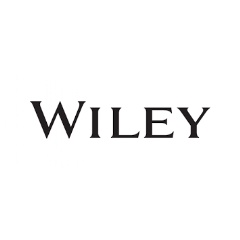Adulteration of Proprietary Chinese Medicines and Health Products Poses Severe Health Risks to Consumers
Traditional Chinese medicine is widely used as a form of complementary medicine all over the world for various indications and for improving general health.
Adulteration of Proprietary Chinese Medicines and Health Products with Undeclared Drugs: Experience of a Tertiary Toxicology Laboratory in Hong Kong.
Traditional Chinese medicine is widely used as a form of complementary medicine all over the world for various indications and for improving general health. Proprietary Chinese medicines (pCMs)—which are composed solely of Chinese medicines and formulated in a finished dose form—are generally believed to be natural and safe, but a new analysis in the British Journal of Clinical Pharmacology reveals serious dangers.
Various reports have documented the adulteration of pCMs and health products with undeclared agents, including prescription drugs, drug analogues, and banned drugs. Such adulation can have serious and even fatal consequences. To examine the problem, Tony Wing Lai Mak, MBChB, MBA, FRCPath, FRCPA, FHKCPath, FHKAM(Path), Chor Kwan Ching, MBChB, MSc, FRCPA, FHKAM (Pathology), and their colleagues at the only tertiary referral clinical toxicology laboratory in Hong Kong retrospectively reviewed cases involving use of pCMs or health products adulterated with undeclared drugs referred to the centre from 2005 to 2015.
The investigators identified 404 cases involving the use of 487 adulterated pCMs or health products with a total of 1,234 adulterants. The adulterants consisted of approved drugs, banned drugs, drug analogues, and animal thyroid tissue. The six most common categories of adulterants detected were nonsteroidal anti-inflammatory drugs (18%), anorectics (15%), corticosteroids (14%), diuretics and laxatives (11%), oral antidiabetic agents (10%), and erectile dysfunction drugs (6%). Sibutramine, an anorectic that has been withdrawn from the market due to its association with increased cardiovascular events and strokes, was the single most common adulterant identified.
The sources of illicit products included over-the-counter drug stores, the Internet, and Chinese medicine practitioners. Importantly, 65% of patients experienced adverse effects attributable to these illicit products, including 14 severe and two fatal cases. Psychosis, iatrogenic Cushing syndrome, and hypoglycaemia were the three most frequently encountered adverse effects.
“These illicit pCMs and health products pose severe health hazards to the public,” said Dr. Mak. “Previous reports of pCM and health product adulteration were mainly routine surveillance data or case reports/series with a small number of affected patients. The present study, to our knowledge, is the largest case series that reports an overview of the use of various adulterated pCMs and health products and the resulting adverse effects.”
The findings should serve as a serious warning to consumers and health professionals. “The public should be educated not to consume pCMs and health products from dubious sources, and frontline clinicians should have a high index of suspicion,” said Dr. Ching.
Additional Information
Full citation: “Adulteration of Proprietary Chinese Medicines and Health Products with Undeclared Drugs: Experience of a Tertiary Toxicology Laboratory in Hong Kong.” Chor Kwan Ching, Sammy Pak Lam Chen, Hencher Han Chih Lee, Ying Hoo Lam, Sau Wah Ng, Mo Lung Chen, Magdalene Huen Yin Tang, Suzanne Suk San Chan, Candy Wai Yan Ng, Jana Wing Lan Cheung, Tina Yee Ching Chan, Nike Kwai Cheung Lau, Yeow Kuan Chong, Tony Wing Lai Mak. British Journal of Clinical Pharmacology. Published Online: October 2, 2017, DOI: 10.1111/bcp.13420.
URL Upon Publication: http://doi.wiley.com/10.1111/bcp.13420
Author Contact: To arrange an interview with the author, please contact Ms. Olivia Ma atcwma@ha.org.hk or +852 29901044, or Ms. Yan Ng at yanng@gmail.com or +852 29901360.
About the Journal: The British Journal of Clinical Pharmacology has the primary goal of publishing high quality research papers on all aspects of drug action in humans. The journal has a wide readership, bridging the medical profession, clinical research and the pharmaceutical industry, and is published monthly. It is owned by the British Pharmacological Society and published by Wiley. The journal’s current Impact Factor is 3.83 (Thomson Reuters Science Citation Index).
About The British Pharmacological Society
The British Pharmacological Society is a charity with a mission to promote and advance the whole spectrum of pharmacology. Founded in 1931, it is now a global community at the heart of pharmacology, with over 3,500 members from more than 60 countries worldwide. The Society leads the way in the research and application of pharmacology around the world through its scientific meetings, educational resources and peer-reviewed journals: the British Journal of Clinical Pharmacology, Pharmacology Research & Perspectives, and the British Journal of Pharmacology, which includes the Concise Guide to PHARMACOLOGY, featuring open access overviews of the key properties of over 1,700 human therapeutic targets and their drugs, and links to www.guidetopharmacology.org.
About Wiley
Wiley, a global company, helps people and organizations develop the skills and knowledge they need to succeed. Our online scientific, technical, medical, and scholarly journals, combined with our digital learning, assessment and certification solutions help universities, learned societies, businesses, governments and individuals increase the academic and professional impact of their work. For more than 200 years, we have delivered consistent performance to our stakeholders. The company’s website can be accessed at www.wiley.com.
( Press Release Image: https://photos.webwire.com/prmedia/6/214665/214665-1.png )
WebWireID214665
This news content was configured by WebWire editorial staff. Linking is permitted.
News Release Distribution and Press Release Distribution Services Provided by WebWire.
